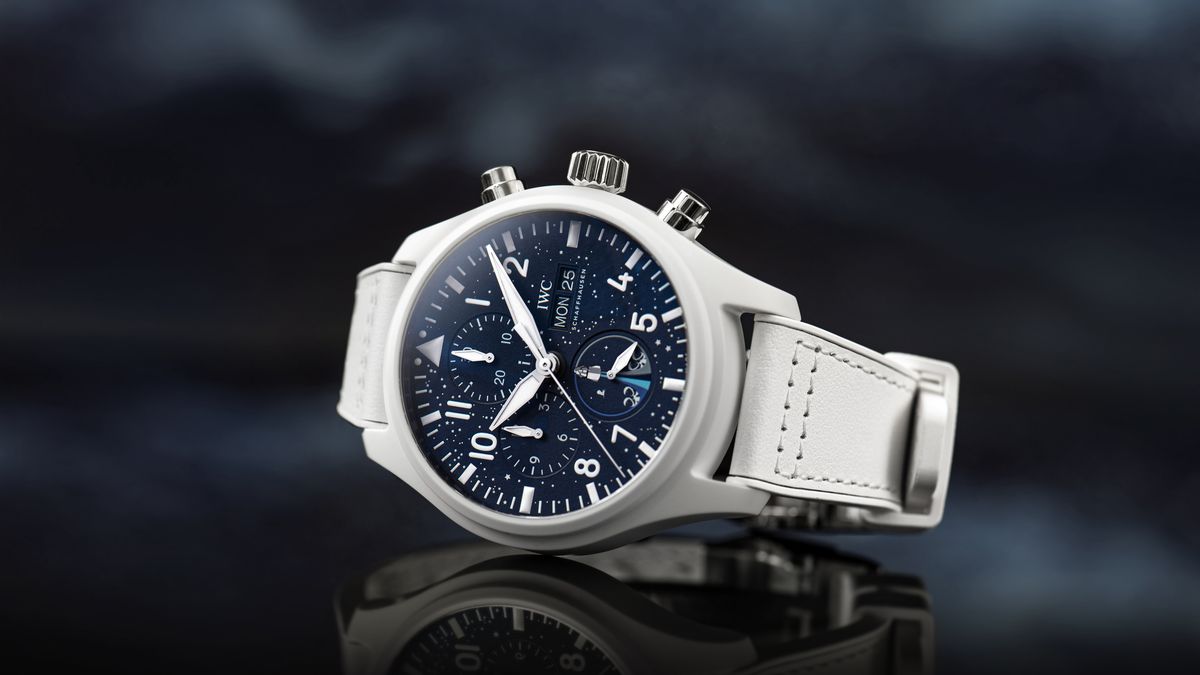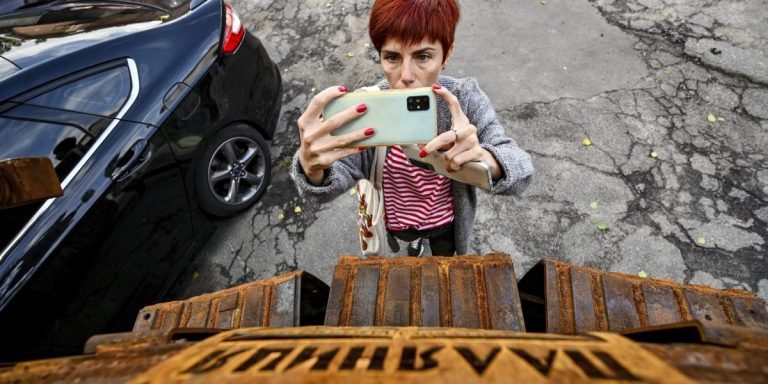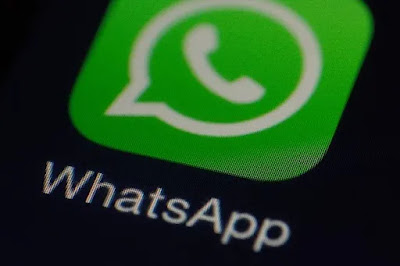On Wednesday night, SpaceX’s Inspiration4 mission launched the first-ever all-civilian crew into Earth’s orbit. With the help of companies including Sam Adams and Martin Guitars, the three-day trip to space aims to raise $200 million for St. Jude Children’s Research Hospital in what amounts to a charitable spin on the emerging market for very expensive joyrides to space. The fact that the mission is filled with branding opportunities isn’t surprising, given that private space launches are already massive multichannel streaming and media events.
Jared Isaacman, the billionaire founder and CEO of the e-commerce company Ship4Payments, is funding the much-publicized trip. The crew also includes the mission’s pilot, Sian Proctor, a geology professor; Hayley Arceneaux, a St. Jude physician assistant; and Chris Sembroski, an engineer who won his ticket in a raffle. None of the passengers are professional astronauts, and they’ll be relying on SpaceX’s autonomous Crew Dragon capsule to ensure the mission goes smoothly.
[embedded content]
The Inspiration4 capsule took off a little after 8pm ET and was carried into space by SpaceX’s Falcon 9 rocket before entering Earth’s orbit around 80 miles beyond the International Space Station (ISS). After about three days of zero gravity and magnificent views — not to mention activities such as a ukulele performance and a video call to a St. Jude patient — the crew will return to Earth, and in late September, Netflix will release a feature-length finale of its five-part reality TV series about the mission. (The first four episodes of the show are already available to watch, and Netflix is livestreaming the launch on its YouTube page.)
The mission also involves a motley payload of gear and collectibles, including merchandise that will be put up for sale in a charity auction after the crew returns to Earth. Those items range from space-themed watches made by IWC to stuffed rocket-ship toys based on characters from the animated Netflix series Space Racers. There’s a $2,000 Martin Guitar ukulele that Sembroski will play on board. And the Inspiration4’s official beer maker, Sam Adams, also arranged for 66 pounds of hops to go to space and will brew beer with them once the mission lands (the beer will be available for purchase later in the fall). Perhaps the weirdest of the items is a slew of non-fungible tokens stored on iPhones, including an NFT recording of a Kings of Leon song that’s set to become the first music NFT ever played in space. Bidding for these items starts on Thursday, and the auctions will end in November.

While selling stuff that’s been to space isn’t new, it’s about to become a lot more common. NASA, a government agency subject to congressional oversight, has traditionally restricted the commercialization of space missions. But as the number of non-NASA space flights has grown, so have opportunities for space-bound merchandise and product placement. Now, because commercial space companies don’t necessarily operate under NASA’s strict restrictions, there’s a race to seize new marketing opportunities in the cosmos: namely, sending products to space before selling them back on Earth.
A brief history of space merchandise
NASA itself doesn’t typically sell stuff that’s been to space, but items from NASA missions have found their way to the market in the past. Meanwhile, astronauts are civil servants and are not legally allowed to personally profit from their positions until they retire from government work, limiting when they can sell any personal items they’re allowed to bring on their missions. Other valuable items that have been to space on NASA missions are typically offered to museums or, on rare occasions, sold off by the government.
Some of the most remarkable items that have made the trip to space and back before being sold to the public have come from astronauts from the Gemini, Apollo, and Mercury programs, some of whom happened to save equipment from their missions. Regulations surrounding what astronauts could keep from these initial missions amounted to verbal agreements at the time, which has led to some controversy over who had the right to the artifacts. But in 2012, President Barack Obama signed a bill into law confirming that these astronauts indeed had ownership rights over many of these mementos. Now, these items sell for hefty sums: One bag from the Apollo 11 mission that was used by Neil Armstrong to carry samples of moon dust sold at Sotheby’s in 2017 for $1.8 million.
[embedded content]
NASA also has strict rules against advertising or endorsing products, and it makes very little off of merchandise with branding or iconography. While the space agency’s various logos have appeared on everything from Vans shoes to Forever 21 tops, the image is in the public domain, which means it’s free for anyone to use.
“People have seen what the historic flown items have sold for and understand that there’s a market for that material, and that those things are valuable and collectible,” said Cassandra Hatton, Sotheby’s global head of science and pop culture, who works with astronauts on memento auctions. “The reason why they were flown originally — there was no commercial purpose behind it. Their value really is historic.”
NASA has started to welcome some commercial deals in recent years. In 2019, the space agency formally announced that it would allow 90 hours of crew time annually for astronauts to pursue marketing activities commissioned by private companies. For instance, Estée Lauder last year paid astronauts to take pictures of a face serum in zero gravity on the ISS. The ISS National Lab has also partnered with Adidas to test its soccer ball on the station, though it’s unclear how useful it is to test a soccer ball in space.
All this means that product placement and promotional stunts in space have historically happened without the US space administration. They have, though, had help from Roscosmos, the Russian equivalent of NASA. Over the past several decades, Russia’s space agency has helped advertise milk, ramen, Pepsi, and even Pizza Hut personal pizzas. And if Stanley Kubrick’s 2001: A Space Odyssey is any indication of what’s to come — the movie featured a Hilton hotel on the moon — the trend of private companies using space as a marketing opportunity will only grow.
“This exploration of space is not just about exploring the scientific or technical frontiers,” explains Scott Pace, director of George Washington University’s Space Policy Institute. “It’s also exploring about, you know, where can the economy go? Where do we expand economic activities beyond the Earth?”
Commercial space travel means space gear will become more common
Three private space companies have already begun the process of launching very wealthy civilians into space: Jeff Bezos’s Blue Origin, Richard Branson’s Virgin Galactic, and now Elon Musk’s SpaceX. All three companies have not only sold their own merchandise but have also cleared the way for space-themed branding and marketing opportunities.
Virgin Galactic, for example, partnered with Under Armour to sell branded sportswear, including the “spacewear” that Virgin Galactic customers wear on their flights and take home afterward. The space tourism company also collaborated with Land Rover to create an Astronaut Edition Range Rover that’s only available to people who have purchased tickets on a Virgin Galactic flight. The SUV includes a space plane-shaped puddle light, as well as cup holders made out of a piece of the landing skid from one of Virgin Galactic’s first flights.
[embedded content]
Blue Origin similarly used the launch of its first crewed mission, which included Bezos himself, to debut the first electric vehicle from Rivian (one of the automaker’s biggest investors is Amazon, where Bezos used to work).
A few of these kinds of marketing opportunities, however, happen more serendipitously. After Bezos threw Skittles across the space capsule on his Blue Origin flight in July, for instance, Skittles quickly announced it would release a limited-time candy pack called “Zero-G Skittles.” The candymaker told Recode the move was not coordinated ahead of time.
Though the trend in space-based branding and marketing campaigns seems to showcase the worst qualities of American capitalism, some argue there’s a greater good in it all. Most people can’t afford a ticket to space, as prices for space tourism missions are still in the hundreds of thousands of dollars. But merchandise and collectibles from these commercial missions mean private space firms can still sell consumers the feeling that they’re at least part of this moment in space history for a lot less money.
“By flying our brands, we get to fly along with them,” Robert Pearlman, a space historian who runs the space collectibles website collectSpace, told Recode. “We get to see a little bit more of ourselves in how spaceflight unfolds and say, ‘Yeah, I may not be able to afford a flight to space, but I eat Skittles.’”
Sponsored content from celebrities in space might not be far away, either. Plenty of celebrities have already reserved tickets on Virgin Galactic, and Virgin Galactic already has plans to bring a TikTok science influencer on one of its upcoming flights. Meanwhile, the private spaceflight company Axiom Space, which has contracted several flights from SpaceX, is offering a space-themed “content innovation platform” to help companies do product demonstrations and create ads in space. More space-based reality TV is in the works, too, including competition shows that aim to send civilians into space. The Discovery Channel is developing one called Who Wants to Be an Astronaut, and earlier this year, NASA signed off on a show called Space Hero that will send a lucky contestant to the ISS.
While commercial space travel feels exciting right now, the novelty of billionaires and ordinary people traveling to space for fun might not last forever. But keenly aware of the historic nature of its flight, the Inspiration4 mission is trying to capitalize on the enthusiasm — for charity — that comes with such an event. We’ll see just how much people will be willing to pay for a piece of that history when the mission lands.





